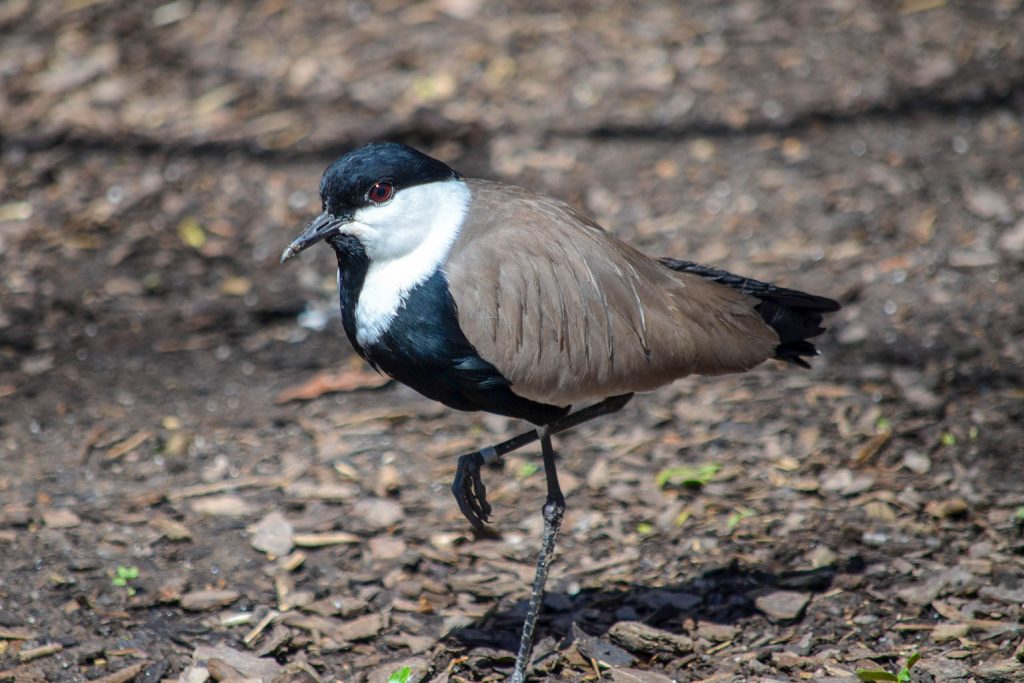Overview
“Where I live”
Spur-winged lapwings reside primarily in the sub-Saharan belt of central Africa but are also native to some Middle Eastern and east Mediterranean countries, including Greece, Turkey, and Cyprus. They frequent a variety of habitats, including dry ground near bodies of fresh or saltwater, marshes, burnt grasslands, agricultural fields, saltpans, mudflats, dunes, and beaches.
You can see spur-winged lapwing in the African Aviary at The Maryland Zoo.
“How I live there”
Spur-winged lapwings are wading birds that stand about one foot tall and have striking brown, black, and white plumage and bright red eyes. Out of breeding season, they typically gather in small flocks of up to 15 birds, although sometimes as many as 200 birds have been seen together. They are gregarious birds that use many different vocalizations to attract mates, defend territory, and signal threats.
Spur-winged lapwings are active day and night, depending on the concentration of prey and predators in a given area. They are ambush predators themselves and are well-adapted to the task. They feed primarily on insects, insect larvae, and other invertebrates that they find in dirt, mud, and shallow water. They may also eat small lizards, amphibians, mollusks, crustaceans, fish, and occasionally seeds. They have long, thin legs fit for wading and running on land or in shallow waters. They have relatively large eyes, and vision is the primary sense upon which they rely for hunting. They have narrow beaks that they use to spear their prey.
“Making my mark”
Because they eat so many invertebrates, spur-winged lapwings help regulate invertebrate populations within the ecosystems that they inhabit.
Raising Young
Male spur-winged lapwings court females by dancing and calling. Pairs often stay together for life. They may breed more than once per year, with the first nesting usually occurring in late spring or early summer. Their nests consist of small holes dug in the ground, usually in sparsely vegetated areas near water. Females lay clutches of 2-4 eggs that will hatch after about three weeks. The male and the female take turns sitting on the eggs and jointly feed the chicks once they hatch out. Spur-winged lapwings are territorial birds that defend their nests aggressively from other species. If a pair nests again in the same season, the male will continue to tend the older chicks from the first clutch while the female turns her attention to the new clutch. Baby spur-winged lapwings become fully independent at about 8 weeks of age but may stay in the area near their parents until the next breeding season.
“What eats me”
Spur-winged lapwings are vulnerable to birds of prey, a variety of small carnivores, and people. Snakes and rodents may also raid their nests and steal eggs.
Conservation
Spur-winged lapwings have a large range and their overall population appears to be increasing. They are listed as a species of least concern by the IUCN, the world’s leading conservation organization. During breeding season, they are sensitive to sudden changes in water level that might wash out their nests.
Taxonomy
- Kingdom: Animalia
- Phylum: Chordata
- Subphylum: Vertebrata
- Class: Aves
- Genera: Vanellus
- Species: spinosus

